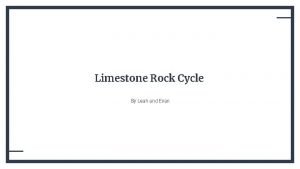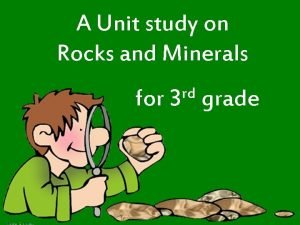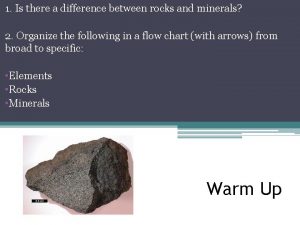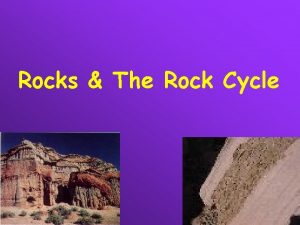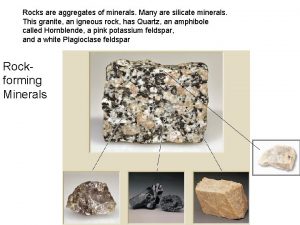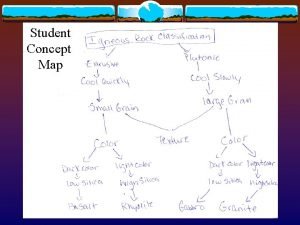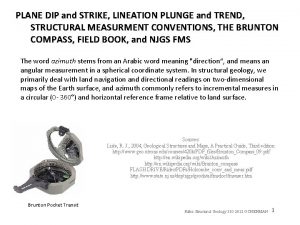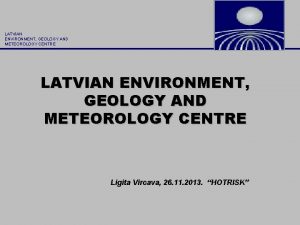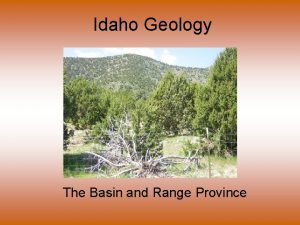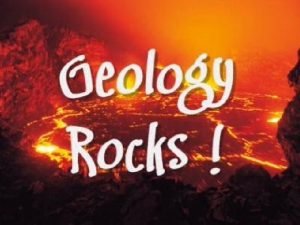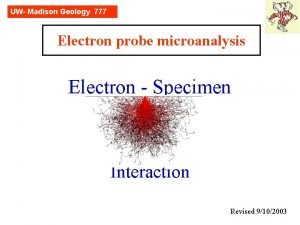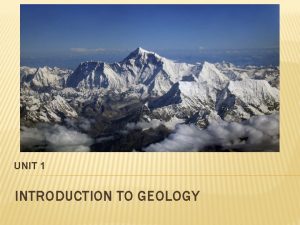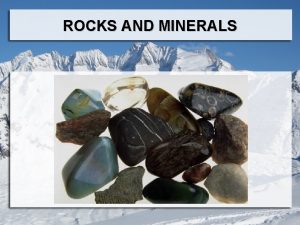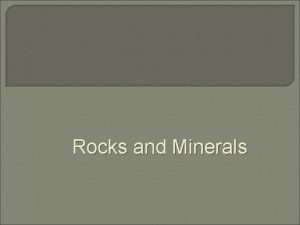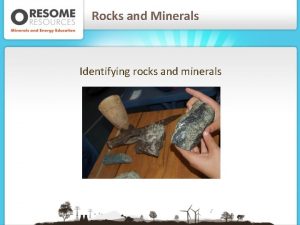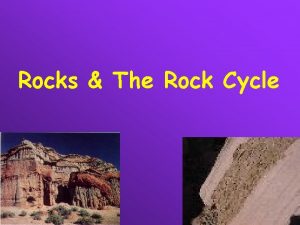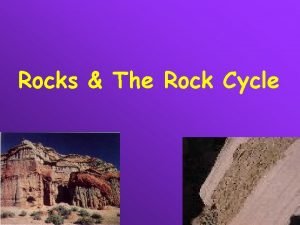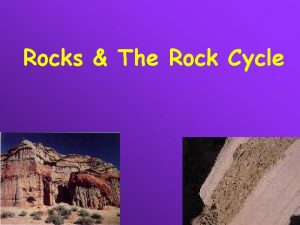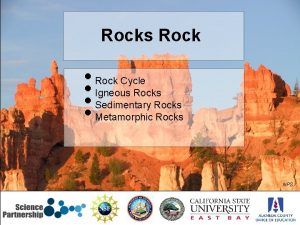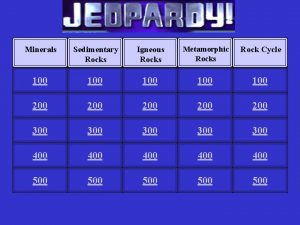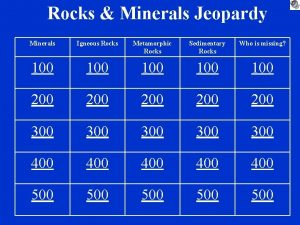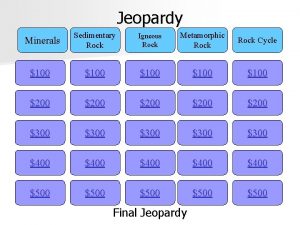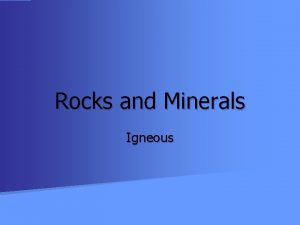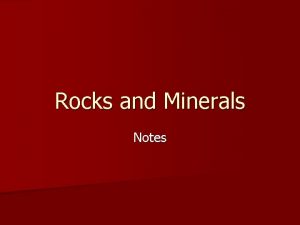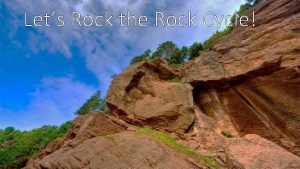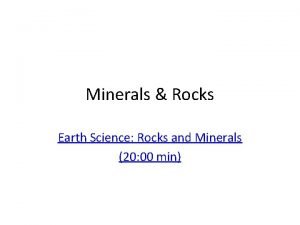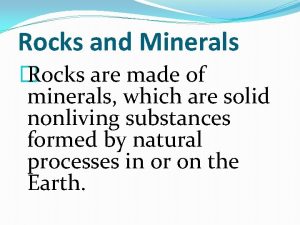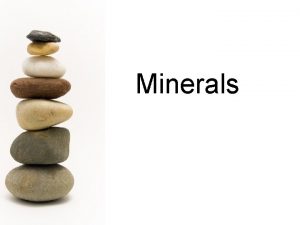ROCKS AND MINERALS GEOLOGY Rocks and Minerals Rock

























- Slides: 25

ROCKS AND MINERALS GEOLOGY

Rocks and Minerals Rock - solid matter made from minerals or petrified organic materials. Mineral - naturally occurring homogeneous inorganic solid having a definite chemical composition and a unique crystal structure, color and hardness

Igneous rocks - hot liquid cools and becomes rock. There are three types 1. Intrusive Igneous -- formed inside the earth from magma chambers Magma - Hot liquid found under the earth’s surface

Intrusive Textures Porphyritic texture - large crystals imbedded in a smaller matrix Phenocryst - Conspicuously large crystal imbedded in a matrix of finer crystals

Phaneritic texture- igneous rock texture - crystals are roughly the same size - large enough to be seen with the unaided eye EXAMPLES Granite - phaneritic 25% quartz and 50% feldspar Diorite - coarse grained intrusive no visible quartz crystals Gabbro - dark green/ black pyroxene and plagioclase

Extrusive Igneous -- formed on the surface of the earth in a lava flow or lava shot from a volcano Lava - molten rock that reaches the earth’s surface through a volcano or fissure Extrusive Textures Aphanatic - igneous rock texture in which the crystals are too small to be seen with the unaided eye 2.

EXAMPLES of Aphanatic Textures Rhyolite - volcanic equivalent of granite Obsidian - dark colored glassy rock Pumice - volcanic rock with a glassy texture Andesite - medium grey fine grained rock Basalt - dark green/ black pyroxene and feldspar extrusive equivalent of gabbro

Crystallization - process where ions arrange themselves into orderly patterns as magma cools

Pyroclastic rocks- shot from a volcano (still igneous) Tuff - frothy volcanic ash formed from huge sudden volcanic events Volcanic breccia - volcanic rocks composed of particles larger than ash Bombs - large solid rocks ejected by volcanoes 3.

Sedimentary rocks - from when sediments from erosion are cemented together. There are two types 1. Clastic- made from broken pieces of other rocks Made from Mud, silt, sand, gravel Examples: Shale- Mud and silt Sandstone- Sand Conglomerate- gravel

Chemical Sedimentary rocks form from minerals dissolved in H 2 O When temperature of water lowers ions come out of solution. Have smooth textures -intergrown crystals EXAMPLES Rock salt - Halite Limestone (not all) Rock Gypsum 2.

Metamorphic Rocks Metamorphic rocks are rocks that have "morphed" into another kind of rock. These rocks were once igneous or sedimentary rocks. The rocks are under tons and tons of pressure, which fosters heat build up, and this causes them to change underground. As a result, most of the thousands of rare minerals known to science occur in metamorphic rocks. The presence of mineral layers, called foliation, is important to observe when identifying a metamorphic rock.

Characteristics of Metamorphic Rocks Classified by texture and composition May have alternate bands of light and dark minerals May be composed of only one mineral, ex. marble & quartzite May have layers of visible crystals Usually made of mineral crystals of different sizes Rarely has pores or openings May have bent or curved foliation

Examples Some examples of how metamorphic rocks were changed:

The Rock Cycle with Environments

The Rock Cycle

Earth’s Layers Inner Core Nickel and Iron Solid -- diameter is 1480 km Outer Core Nickel and Iron Liquid -- 1990 km thick

Earth’s Layers • • Lower Mantle Solid -- 2165 km thick Upper mantle (Athenosphere) Plasticlike part is 600 km Rigid top part is 75 km

Earth’s Layers Crust Continental -- Si rich Oceanic -- Fe and Mg rich

Bowen’s Reaction Series When two tectonic plates collide one may be pushed down into the mantle. It heats and melts Magma that is made will have different chemical composition depending on where it comes from.

Bowen’s Reaction Series Magmas from Continental Crust - rich in silicon and aluminum Magmas from oceanic crust rich in iron and magnesium Composition determines which rocks will be made when magma cools

Bowen’s Reaction Series N. L. Bowen - showed that cooling magmas produce minerals in a predictable order Two sides - Iron (Fe) rich side and a calcium / sodium (Ca / Na) rich side.

Bowen’s Reaction Series Olivine - First Fe rich mineral to form - in tetrahedra shape easily weathered on the surface Pyroxenes - Tetrahedra link in long chains - also weather easily

Bowen’s Reaction Series Amphiboles - double strands made from linking pyroxenes Micas - amphibole chains make sheets Feldspar - from the Ca/Na side like olivine but Al is inside the tetrahedra vs. Si

Bowen’s Reaction Series Feldspars - as temp cools Ca and Na replace Al inside the tetrahedron Quartz - very low temperatures - little left in magma except Si and O three dimensional networks
 Igneous rock sedimentary rock metamorphic rock
Igneous rock sedimentary rock metamorphic rock Igneous rocks metamorphic rocks and sedimentary rocks
Igneous rocks metamorphic rocks and sedimentary rocks Https://geology.com/rocks/
Https://geology.com/rocks/ Types of rocks
Types of rocks Solid rock
Solid rock Difference between minerals and rocks
Difference between minerals and rocks The rock cycle concept map
The rock cycle concept map Suzanna socked me sunday poem
Suzanna socked me sunday poem Difference between rocks and stones
Difference between rocks and stones Rock type
Rock type Minerals vs elements
Minerals vs elements Rocks are aggregates of minerals
Rocks are aggregates of minerals Chapter 3 standardized test practice answers
Chapter 3 standardized test practice answers Chapter 3 standardized test practice answers
Chapter 3 standardized test practice answers Extrusive vs intrusive igneous rocks
Extrusive vs intrusive igneous rocks Rhyolite and basalt
Rhyolite and basalt How can one type of rock change into another type of rock?
How can one type of rock change into another type of rock? Extreme sports bungee jumping
Extreme sports bungee jumping Explain rock cycle
Explain rock cycle Concept map igneous rocks
Concept map igneous rocks Plunge and plunge direction
Plunge and plunge direction Latvian environment, geology and meteorology centre founded
Latvian environment, geology and meteorology centre founded Basin and range geology
Basin and range geology Xvfk
Xvfk Geology
Geology What is geology?
What is geology?


